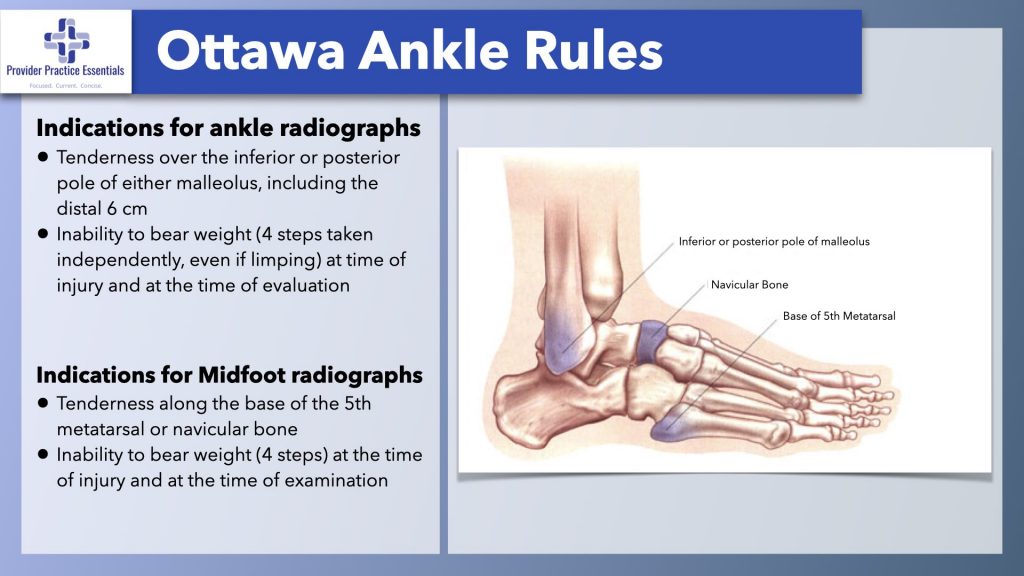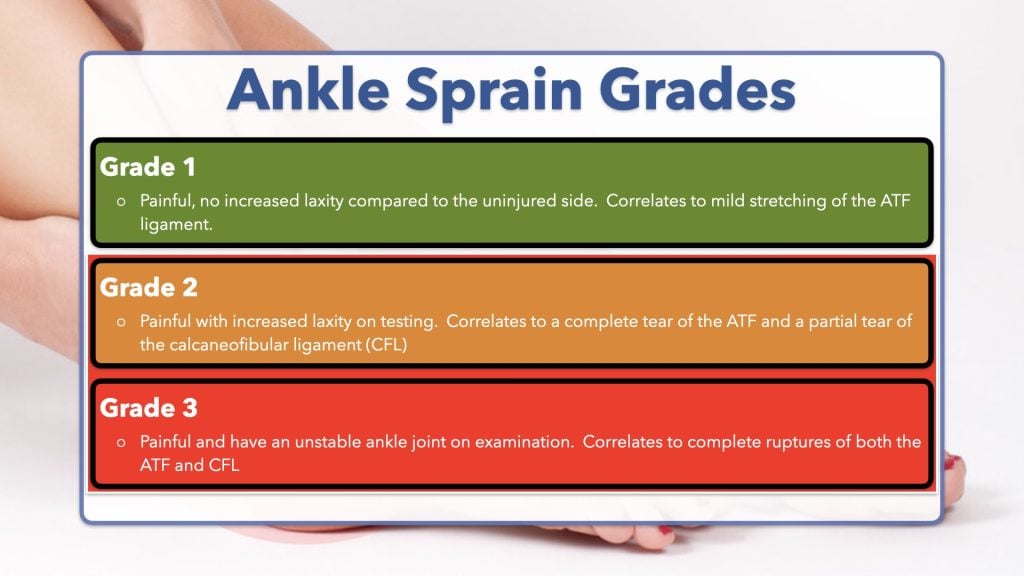Payal Shah, PA-C
“I fell down 2 stairs and twisted my ankle”. “I was playing soccer and I hit the ball wrong and know my ankle hurts”. Ankle pain is a very common complaint seen in primary care offices, but more often in urgent cares and emergency departments.
As with any other chief complaint, the first thing to do is a history and physical.
- What happened?
- How many steps did you fall down (if they fell)?
- Where are you feeling the pain?
- Does it go down into the foot?
- Are you able to walk on it?
- Look at the ankle, is it bruised?
- Is there point tenderness?
- Is the patient neurovascularly intact?
- Brisk capillary refill?
- Palpable pulses?
Based on the location of the pain, you can use the Ottawa ankle rules to determine if an Xray needs to be done. HOWEVER, most of the time, patients come in requesting an xray. You can spend time explaining the rules and why imaging (and radiation) is not needed. But, even after nodding along and agreeing, they’ll ask when they’re getting their xrays. Sometimes you just have to bite the bullet and order the XR, even if the exam is very consistent with a sprain. Also remember to examine the joint above and below to assess for referred pain as well.
Based on the picture below, you can see the different locations to examine to apply the Ottawa ankle rules. Depending on your location, you may have to do additional xrays rather than just an ankle xray. If there is high clinical suspicion of an ankle xray where you might need to have orthopedics involved, you should get tibia/fibula and foot xrays with it.

Ankle Sprain Grading
Ankles are graded based upon exam findings, with our without imaging. It is important to examine both the injured and uninjured ankle to make an appropriate diagnosis.

Management
Now – you get the xray, and there is no fracture or other bony injury. You believe the patient has an ankle sprain, how should you manage this? RICE. Rest: If they work as a delivery person working 10-11 hours a day walking around delivering packages, they should probably take a few days off in order to heal the sprain. Ice: Helps with the swelling, helps with the pain. Compression: Also helps with swelling, and helps stabilize the joint to provide more relief in terms of pain.
I usually do an ACE wrap to provide some relief in the ED, but advise them that they can get OTC ankle braces that might support them a little better. If they have complete laxity in their ankle, the brace you give them can be a walking/CAM boot. Elevate: helps to keep the affected extremity against gravity so the swelling decreases. The combination allows good healing in terms of ankle sprains. You can also run it by orthopedics, but they usually will manage this on an outpatient basis unless they have neurovascular deficits.
If your facility has them, you can also provide a post op/walking shoe or an air ankle splint and crutches to help with weight bearing during the healing process. Advise them that depending on the severity of their injury, the healing times can vary and they should allow for proper healing before starting to play any sports or do any strenuous activity.
